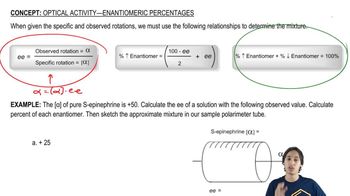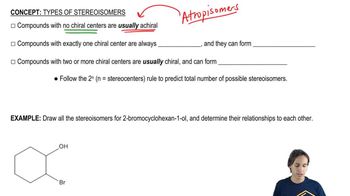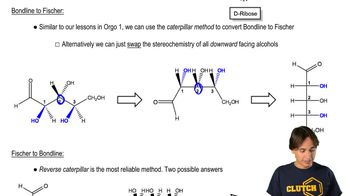(a) There is only one ketotriose, called dihydroxyacetone. Draw its structure.
(b) There is only one aldotriose, called glyceraldehyde. Draw the two enantiomers of glyceraldehyde.
 Verified step by step guidance
Verified step by step guidance Verified video answer for a similar problem:
Verified video answer for a similar problem:



 1:15m
1:15mMaster Introduction to different projections. with a bite sized video explanation from Johnny
Start learning